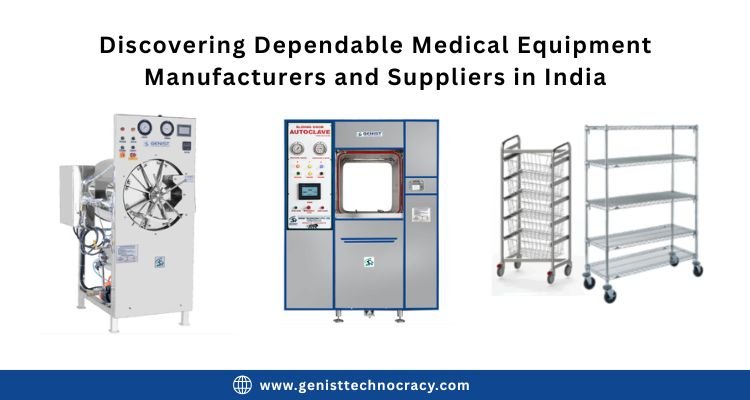The transportation sector stands at a pivotal crossroads where innovation meets sustainability. As urban populations expand and climate change accelerates, the demand for greener, more efficient transport systems has never been greater. Traditional transport models, heavily reliant on fossil fuels, contribute significantly to global emissions. The shift toward sustainability is now not just a choice but a necessity.
Custom software solutions are becoming the cornerstone of this transformation, enabling intelligent, data-driven, and environmentally responsible transport operations. From fleet management systems to predictive analytics, digital innovation is reshaping how mobility functions. This blog explores how custom software is driving greener transport networks and what the future holds for sustainable mobility.
The Need for Greener Transport Networks
Environmental Responsibility
Transportation accounts for a major share of global carbon emissions. Inefficient traffic systems, poorly optimized routes, and outdated logistics operations waste both fuel and time. Greener networks aim to reduce emissions, enhance operational efficiency, and foster long-term environmental balance.
Urban Growth and Infrastructure Challenges
Rapid urbanization has led to overcrowded cities, congested roads, and stressed public transport systems. Without intelligent solutions, infrastructure expansion alone cannot keep pace with demand. Greener transport networks rely on data integration, automation, and real-time software to manage these pressures efficiently.
Economic and Policy Factors
Governments and organizations worldwide are setting ambitious sustainability targets. Policies promoting electric vehicles, renewable energy integration, and smarter mobility are influencing how transport systems evolve. Custom software helps achieve compliance while ensuring profitability and scalability.
Understanding Custom Software in Transportation
Custom software refers to tailor-made digital solutions designed to meet specific needs of transport operators, governments, or logistics companies. Unlike off-the-shelf tools, these solutions are adaptable, scalable, and highly integrated with existing infrastructure.
Examples include:
-
Fleet and route optimization platforms
-
Real-time traffic management dashboards
-
Emission and energy monitoring systems
-
Predictive maintenance and asset management tools
-
Passenger information and journey-planning applications
Such systems often integrate with IoT sensors, GPS tracking, and AI-driven analytics to enhance decision-making. Many organizations achieve this through specialized IoT software development services, ensuring seamless data flow and real-time responsiveness.
How Custom Software Enables Greener Transport Networks
1. Route Optimization and Smart Logistics
Custom-built algorithms analyze traffic conditions, vehicle capacity, and delivery schedules to determine the most efficient routes. By reducing idle time and fuel consumption, these systems cut emissions and operational costs, leading to a more sustainable logistics chain.
2. Fleet Management and Emission Tracking
Software-powered telematics provide real-time data on vehicle performance, fuel usage, and driver behavior. This transparency enables operators to make informed decisions about fleet maintenance, scheduling, and energy use, ensuring lower emissions and higher productivity.
3. Intelligent Traffic Control Systems
Urban congestion leads to billions of liters of fuel wasted annually. Smart traffic systems, powered by adaptive software, adjust signal timings dynamically, minimizing stop-and-go driving and improving fuel efficiency across entire networks.
4. Promoting Multimodal Transportation
Custom applications integrate different modes of transport—buses, metros, bicycles, and electric scooters—into a unified network. By providing seamless connections and real-time updates, they encourage commuters to switch from personal cars to greener alternatives.
5. Predictive Maintenance and Efficiency
Predictive software identifies potential faults before they occur, preventing breakdowns and optimizing energy usage. Regular maintenance through software insights extends the lifespan of vehicles, reduces waste, and supports long-term sustainability.
6. Data Analytics for Sustainable Decisions
By aggregating real-time data from vehicles, infrastructure, and users, custom platforms enable decision-makers to assess energy usage, traffic flow, and carbon footprint. This data-centric approach fosters continuous improvement toward greener outcomes.
Key Benefits of Custom Software in Green Transport
Environmental Benefits
-
Reduced fuel consumption and CO₂ emissions
-
Improved air quality and urban livability
-
Enhanced integration of renewable energy sources
Operational Benefits
-
Lower operating costs through efficiency gains
-
Reduced downtime with predictive maintenance
-
Improved route reliability and delivery accuracy
Social and Urban Benefits
-
Less congestion and travel time
-
Increased access to sustainable mobility options
-
Enhanced quality of life through cleaner transport solutions
Implementing Custom Software for Greener Transport
1. Define Clear Objectives
Organizations must identify specific sustainability goals, such as reducing emissions by a certain percentage or transitioning to electric fleets within a set timeframe.
2. Collect and Integrate Data
Data from sensors, GPS devices, and operational systems should be centralized. Proper data architecture ensures accurate analytics and real-time insights across the network.
3. Choose the Right Technology Stack
Selecting scalable software and technologies compatible with local infrastructure is essential. Cloud integration, API connectivity, and modular architecture make future upgrades smoother.
4. Start Small, Then Scale
Pilot programs in limited areas help test system reliability. Once validated, the solution can be expanded across entire fleets or city networks for maximum impact.
5. Train and Engage Stakeholders
Drivers, operators, and technicians must be trained to use the software efficiently. User adoption is key to ensuring the system’s long-term success.
6. Continuous Monitoring and Improvement
Sustainability isn’t static. Software should provide ongoing reports and insights, allowing operators to adjust strategies based on performance metrics and environmental impact.
Overcoming Key Challenges
High Initial Investment
While custom software development may require upfront investment, the long-term savings from reduced fuel consumption and improved efficiency outweigh the costs.
Data Privacy and Security
Transport networks generate massive data volumes. Ensuring privacy and cybersecurity through encryption and compliance measures is critical for sustainable operations.
Integration with Legacy Systems
Older transport systems may lack compatibility with new technologies. Middleware and APIs can bridge this gap, allowing smooth data transfer between old and new platforms.
Resistance to Change
Human factors often pose a challenge. Comprehensive training, awareness programs, and gradual rollout strategies help overcome employee and stakeholder resistance.
Maintenance and Scalability
Custom software must evolve with changing needs. Regular updates, cloud scalability, and strong vendor support ensure long-term reliability.
The Future of Greener Transport Networks
Autonomous and Connected Vehicles
As autonomous vehicles become mainstream, software will coordinate entire fleets, minimizing energy waste and traffic congestion while optimizing routes for minimal environmental impact.
Electric and Hydrogen Integration
Software will manage energy flow across charging and refueling networks, predicting demand and reducing strain on the grid for cleaner, smarter operations.
Edge Computing and IoT Expansion
With 5G and edge computing, transport systems will respond instantly to environmental conditions, accidents, and demand changes, enhancing safety and sustainability.
Mobility-as-a-Service (MaaS)
Custom software will merge public, private, and shared transport into unified platforms, offering convenient, eco-friendly travel options with dynamic pricing and scheduling.
AI-Driven Analytics
Artificial intelligence will provide predictive insights into transport behavior, energy consumption, and emissions control, leading to continuously improving green operations.
Transparent Carbon Accounting
Future platforms will integrate ESG metrics and carbon-tracking dashboards, enabling organizations to measure, report, and improve sustainability performance transparently.
Conclusion
Custom software is redefining how the world moves — transforming transportation from a carbon-heavy necessity into a driver of environmental innovation. Through intelligent data integration, real-time monitoring, and predictive analytics, it enables networks that are cleaner, smarter, and more efficient.
The journey toward greener transport is long, but with technology as its foundation, sustainable mobility is within reach. Those investing today in software-driven transport ecosystems are paving the way for cities that are not only connected but also kind to the planet.



Leave a Reply